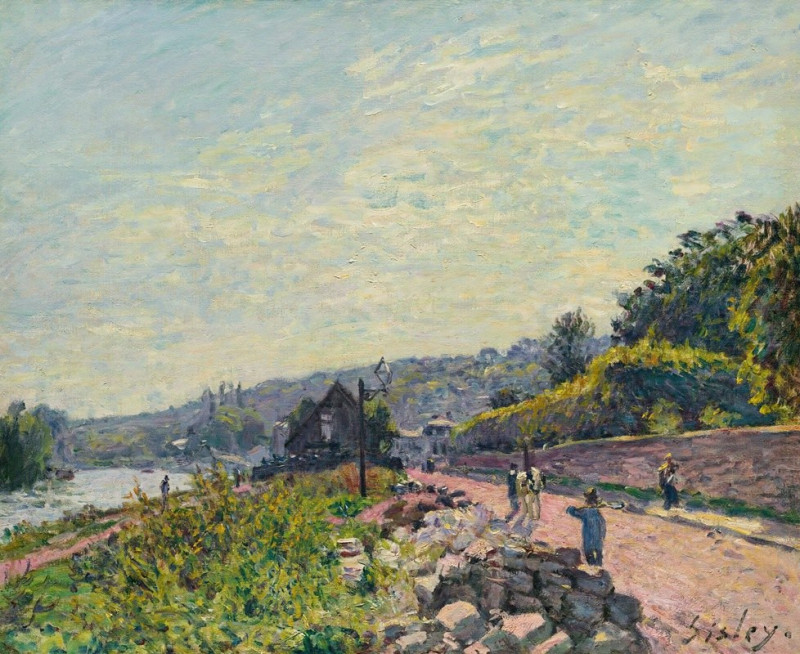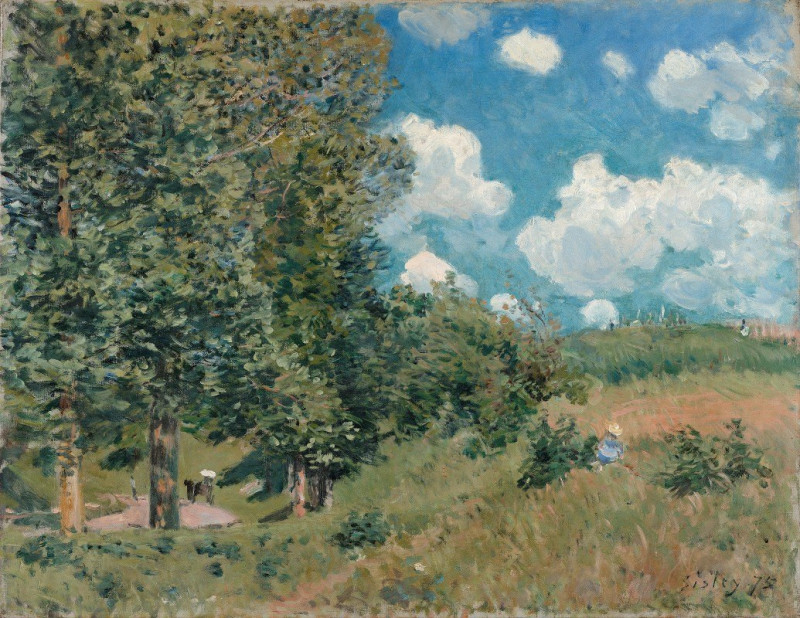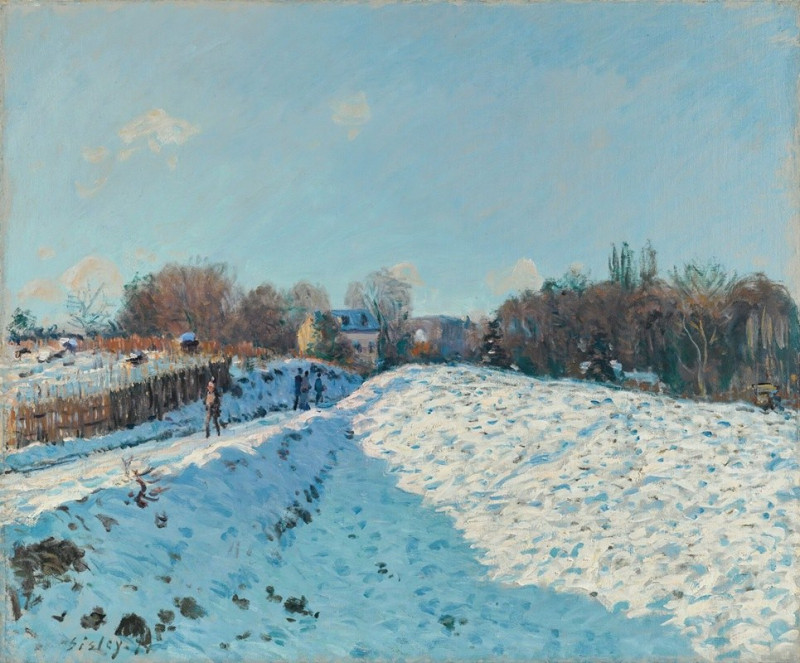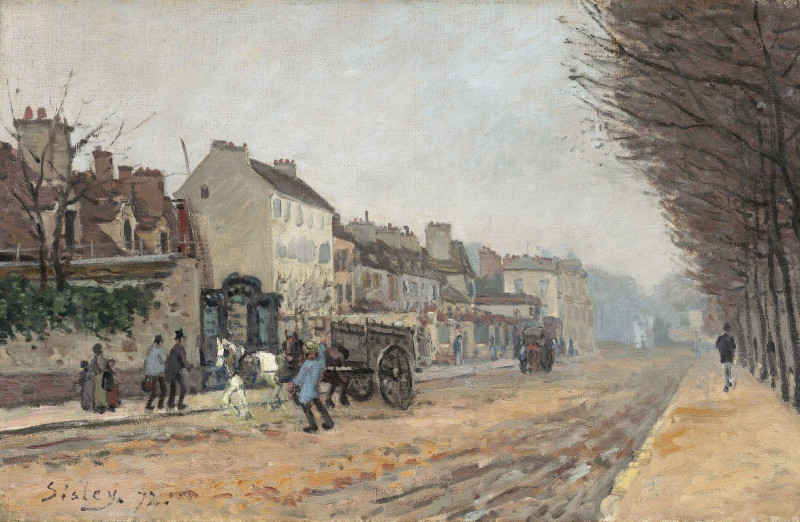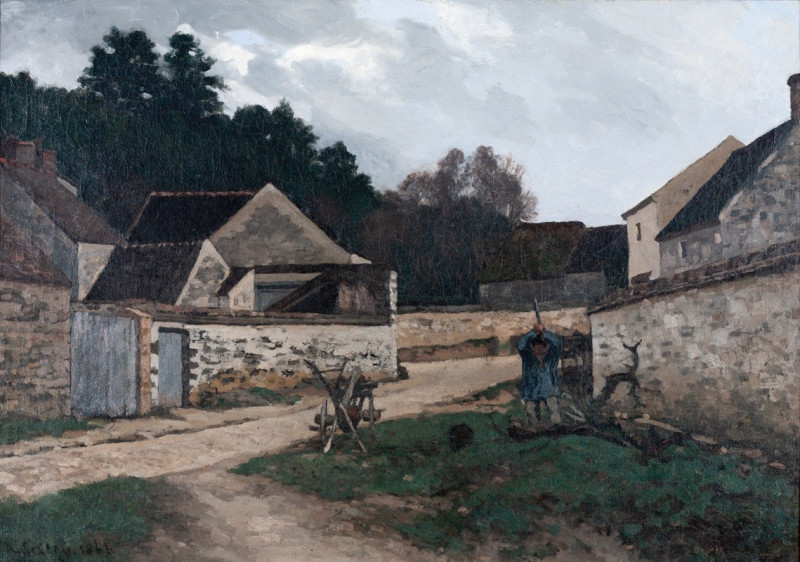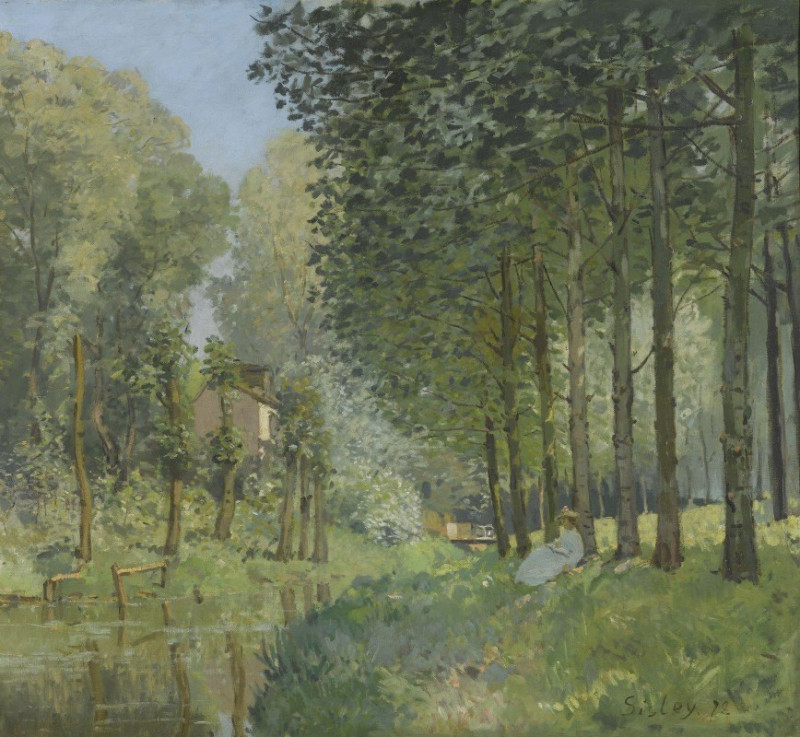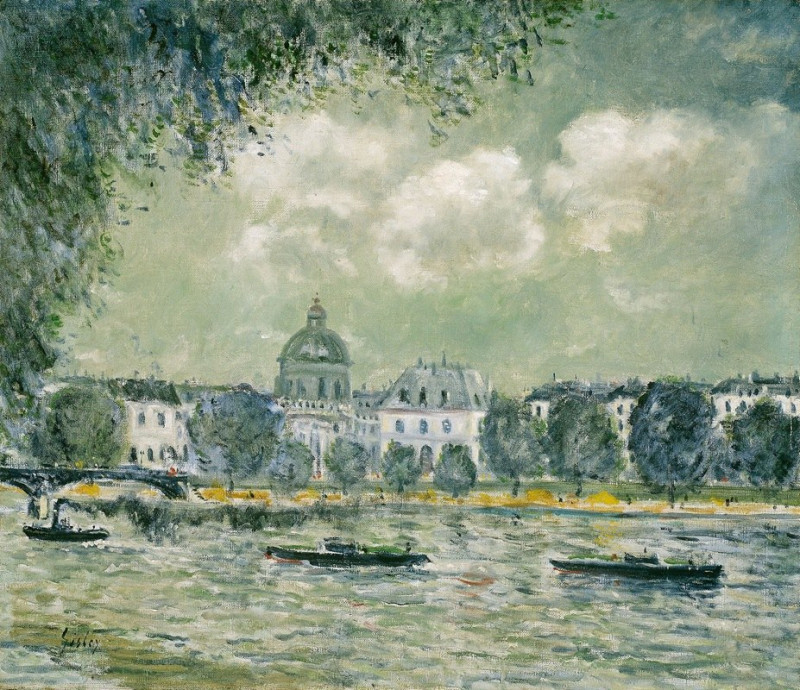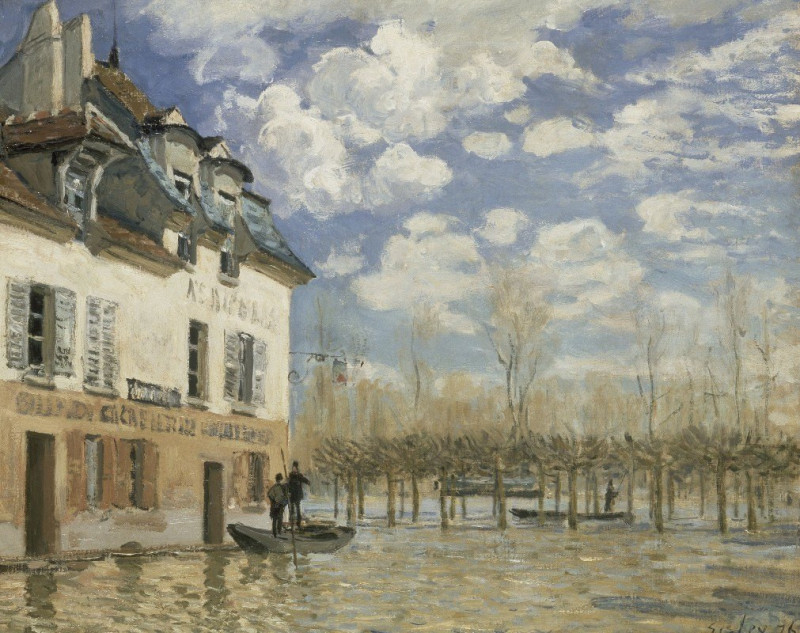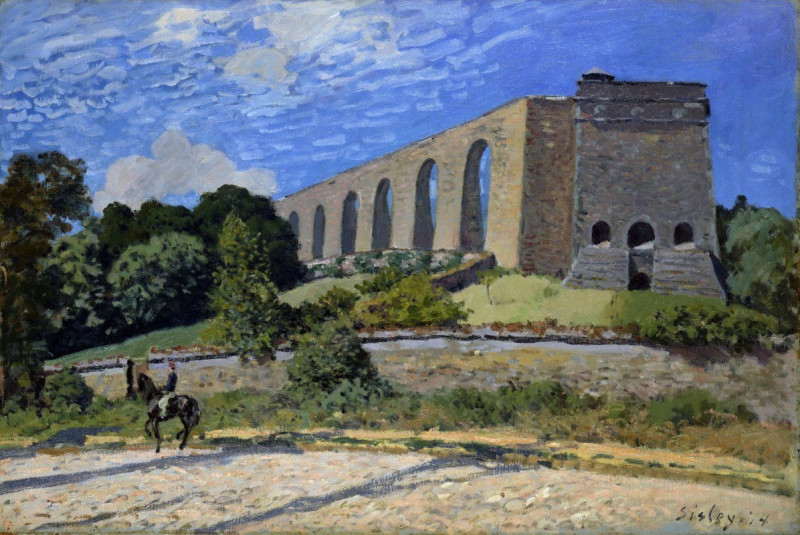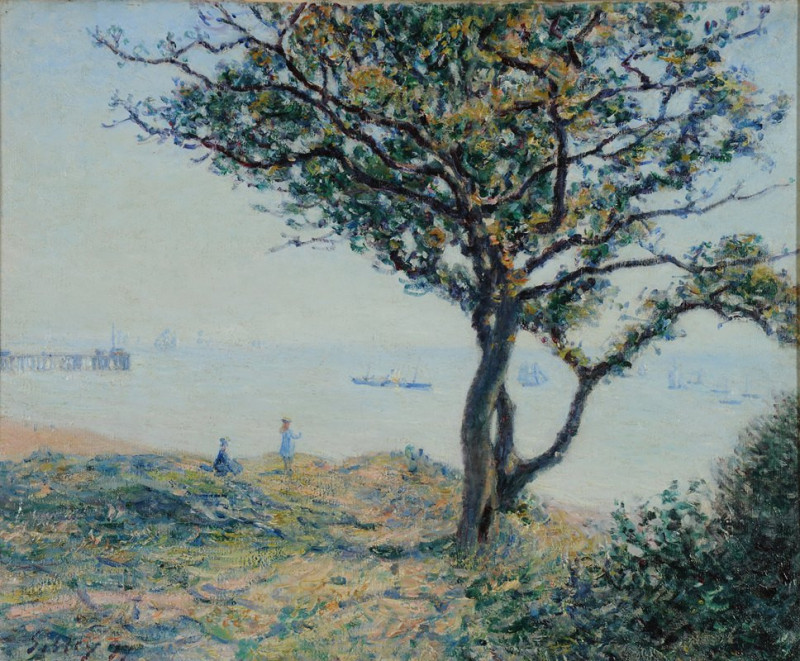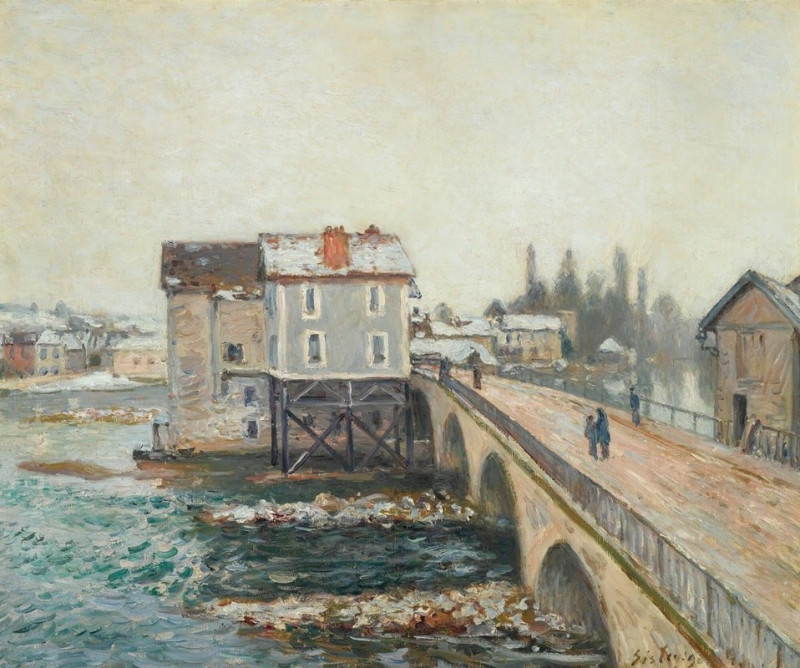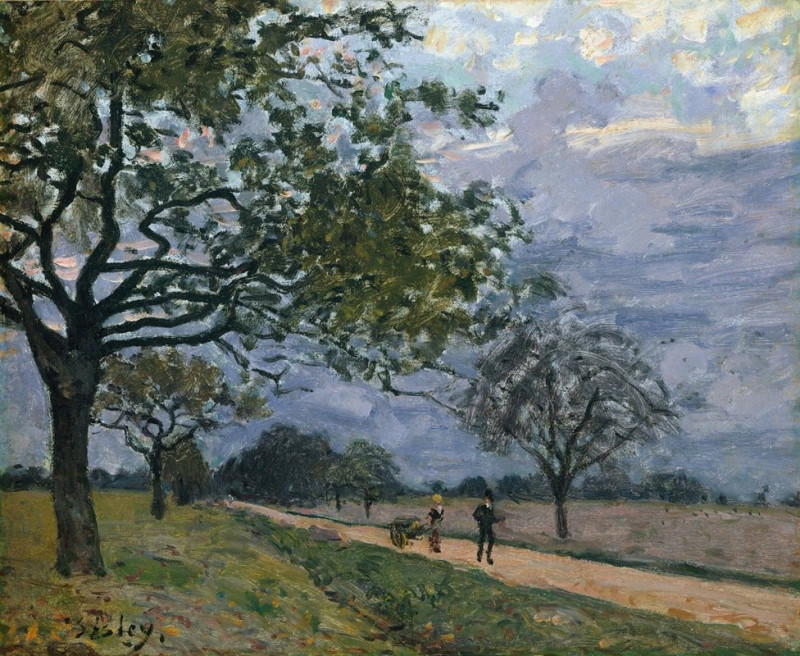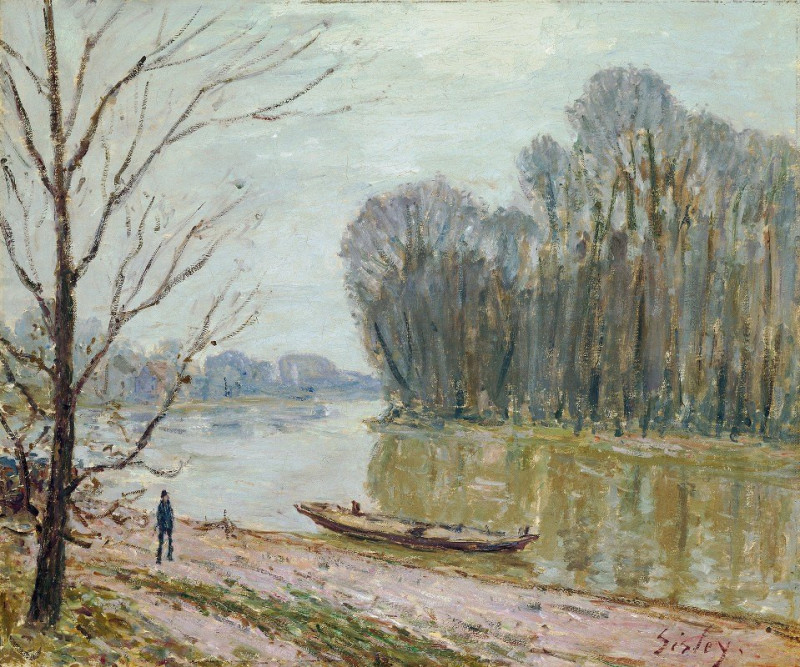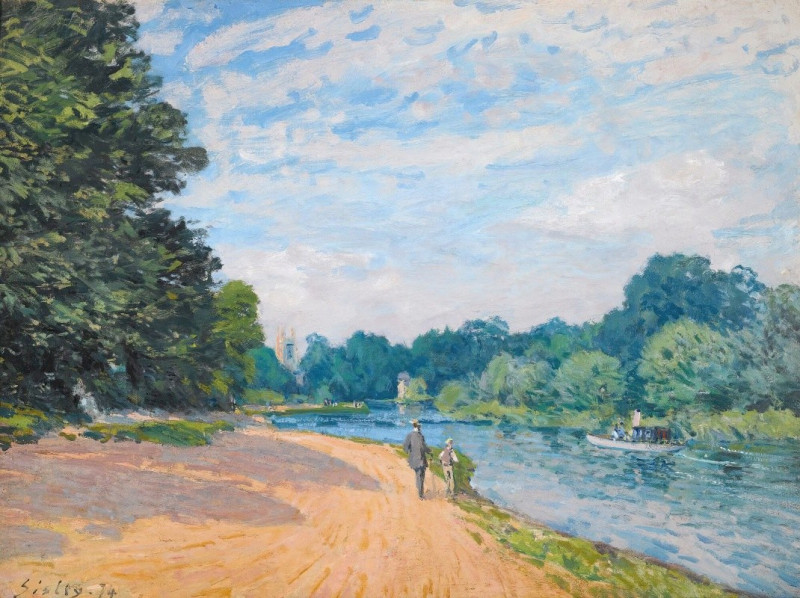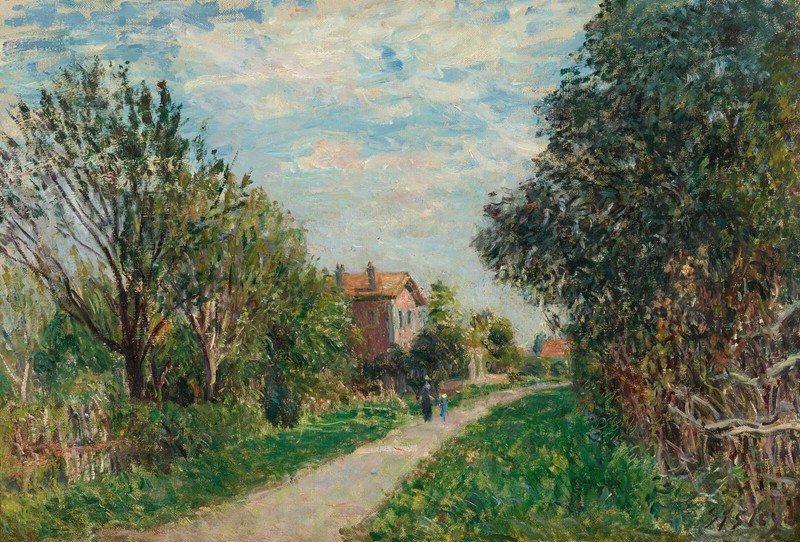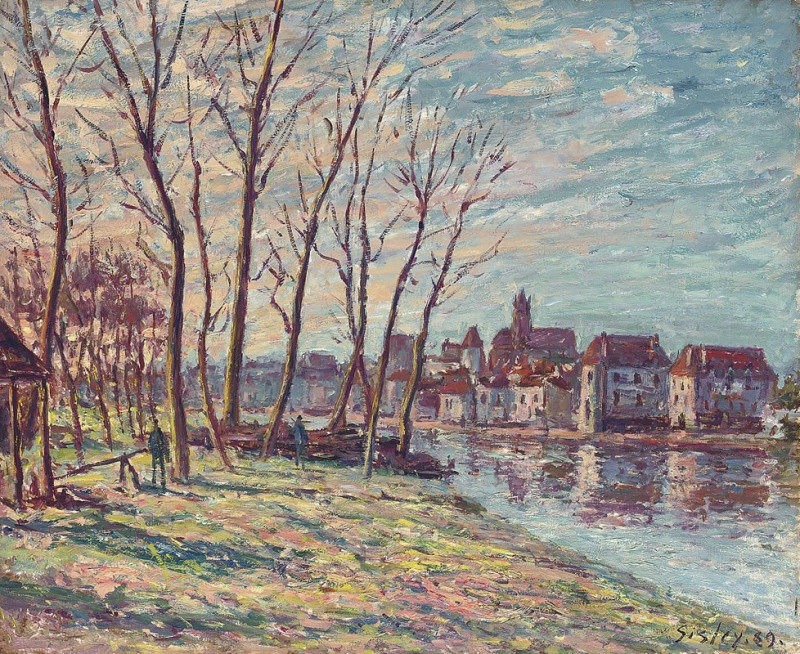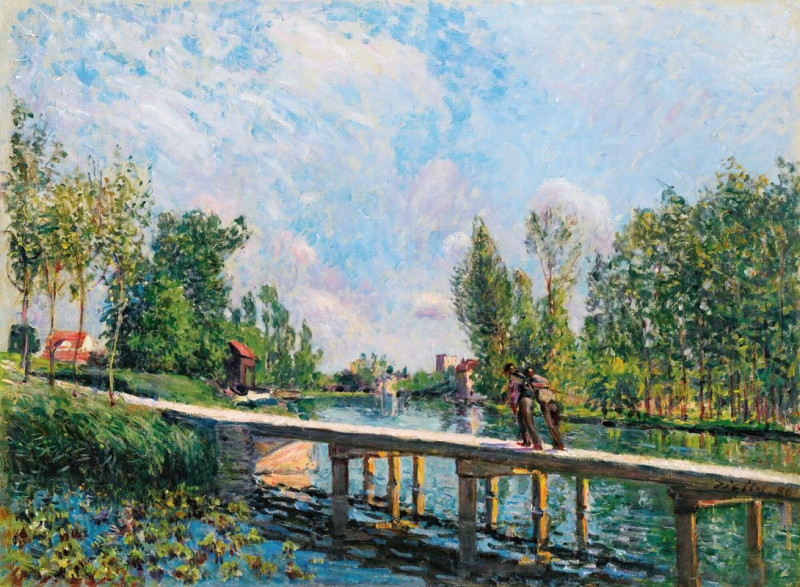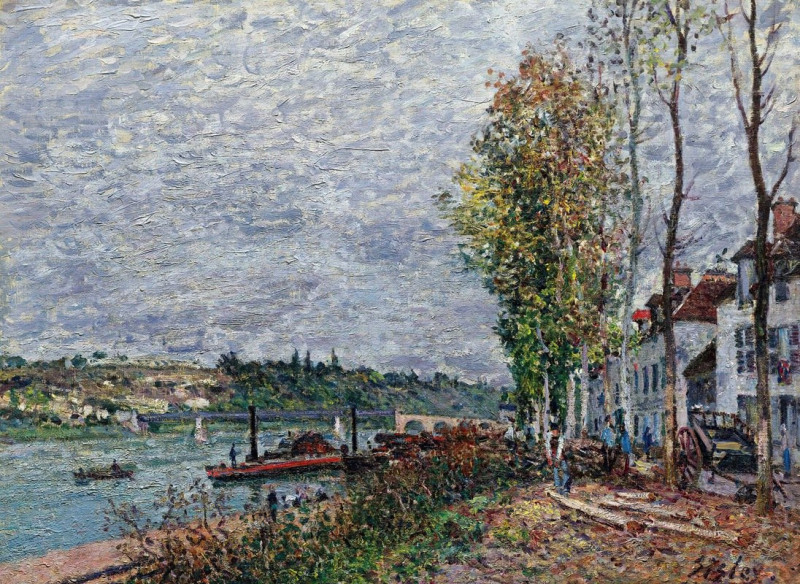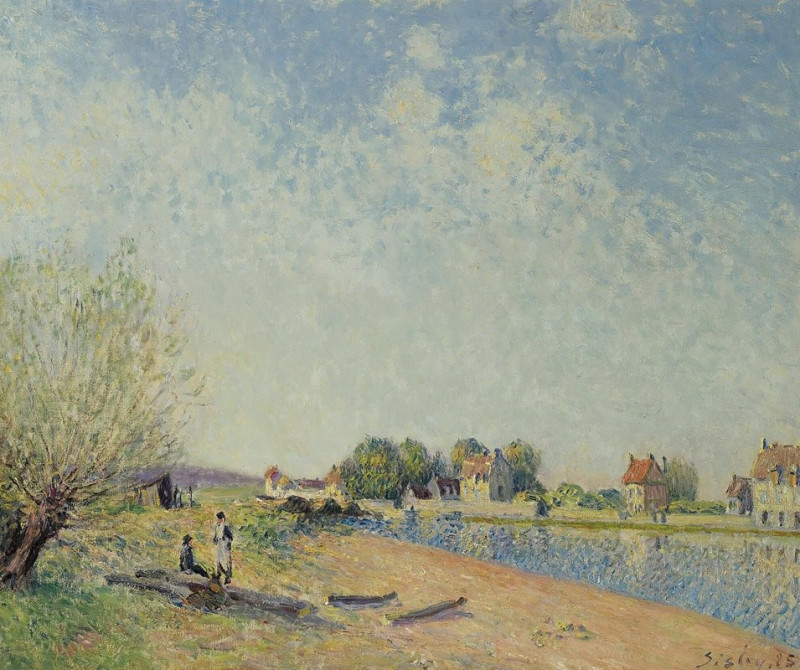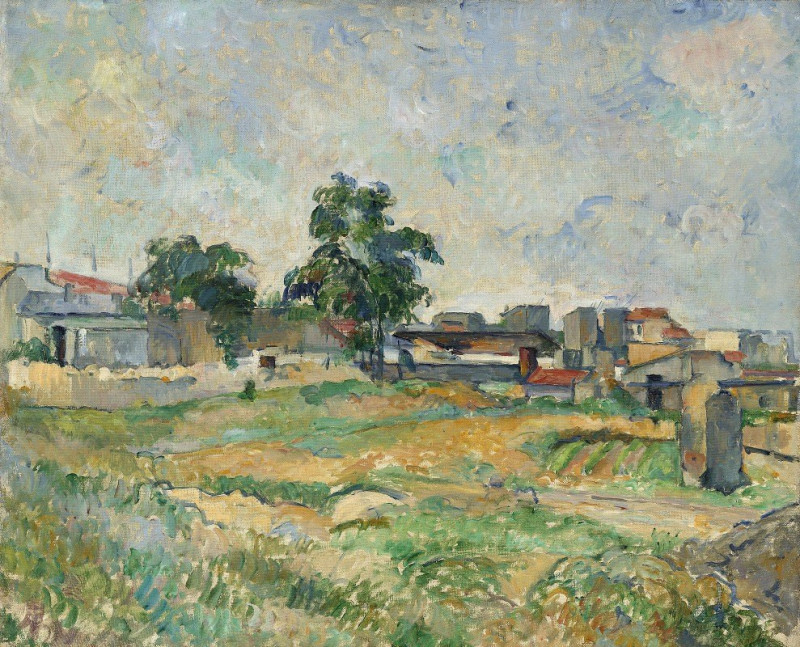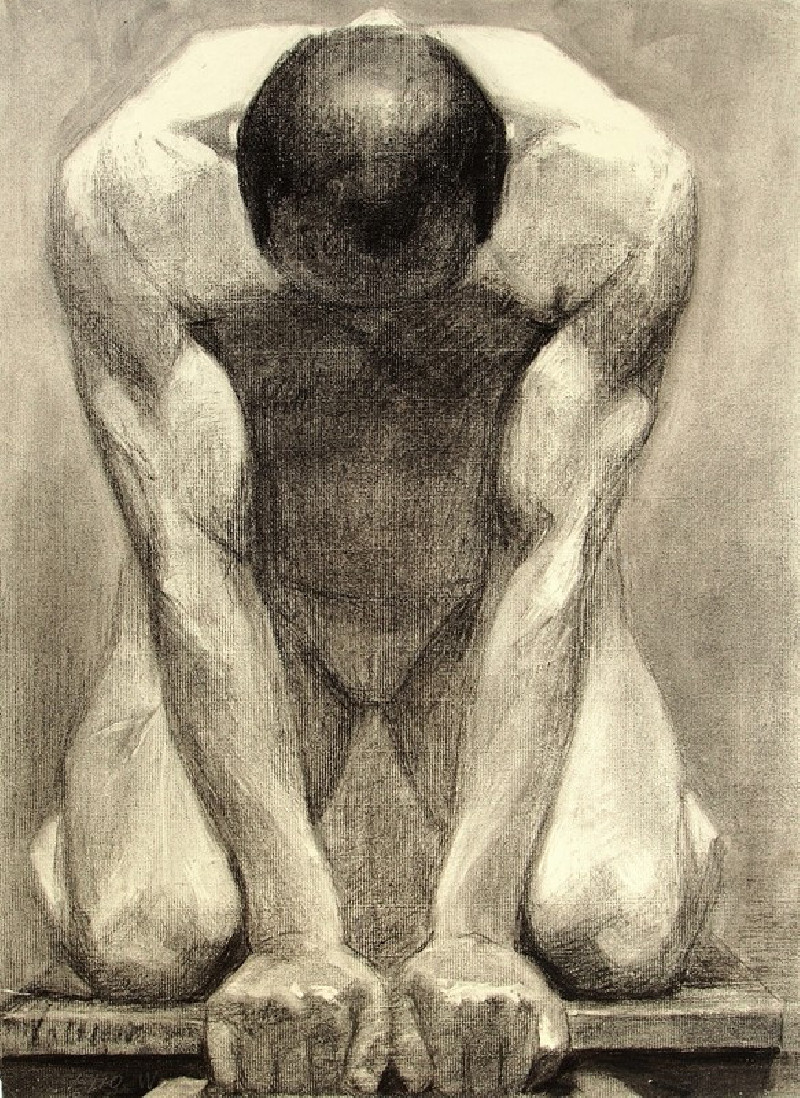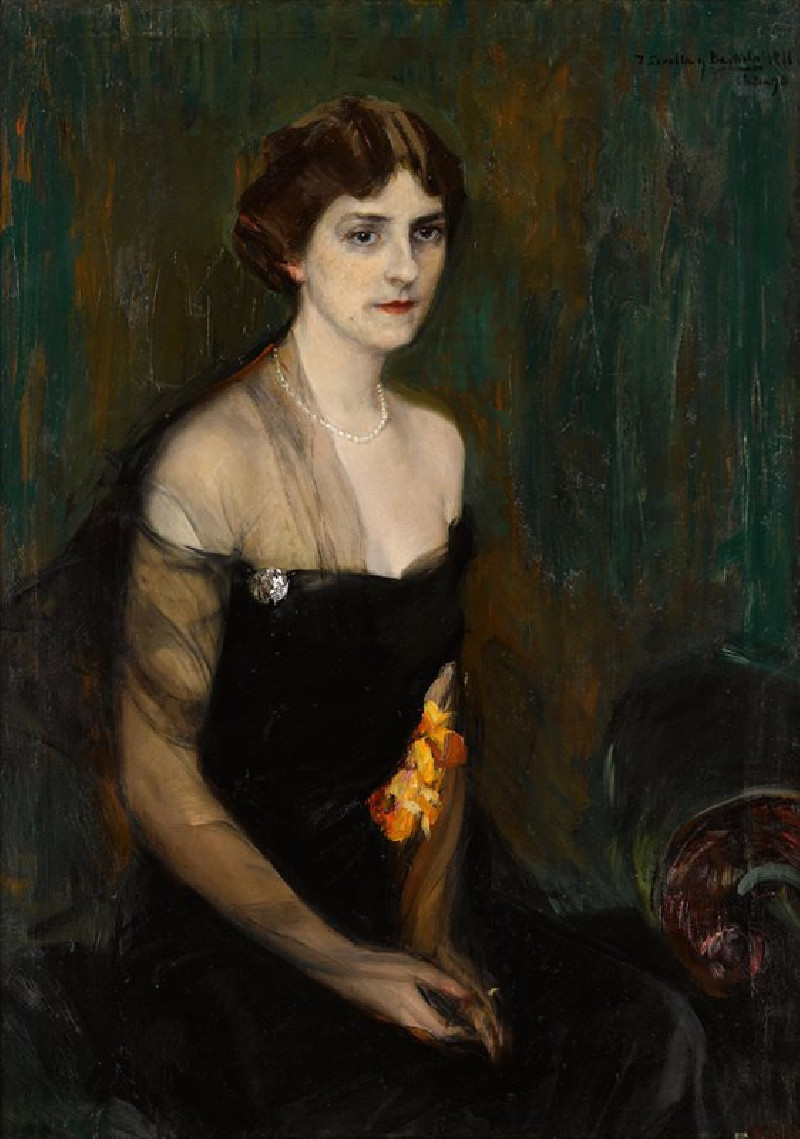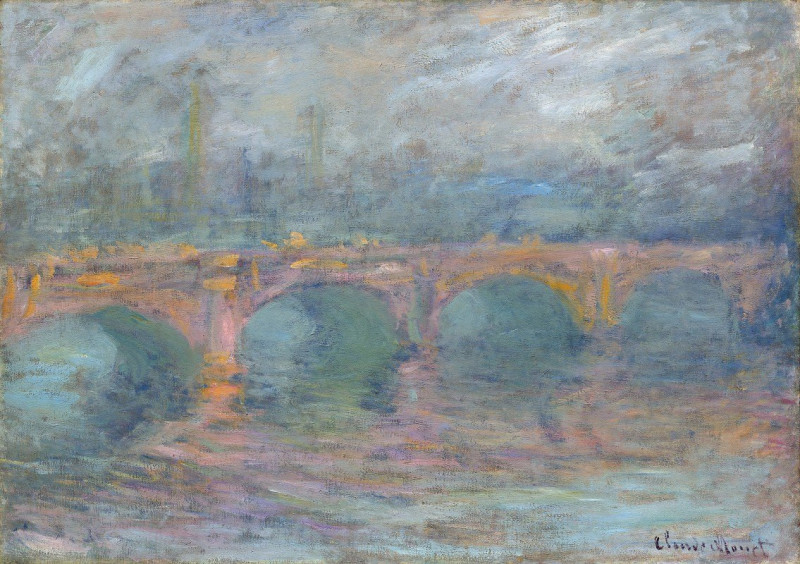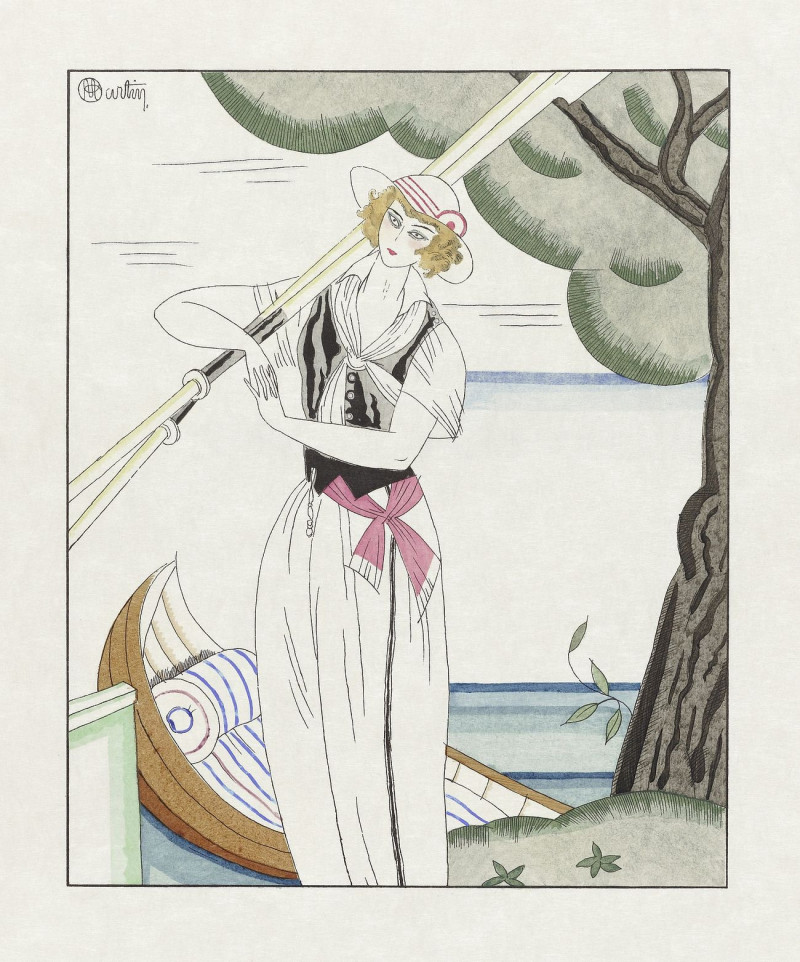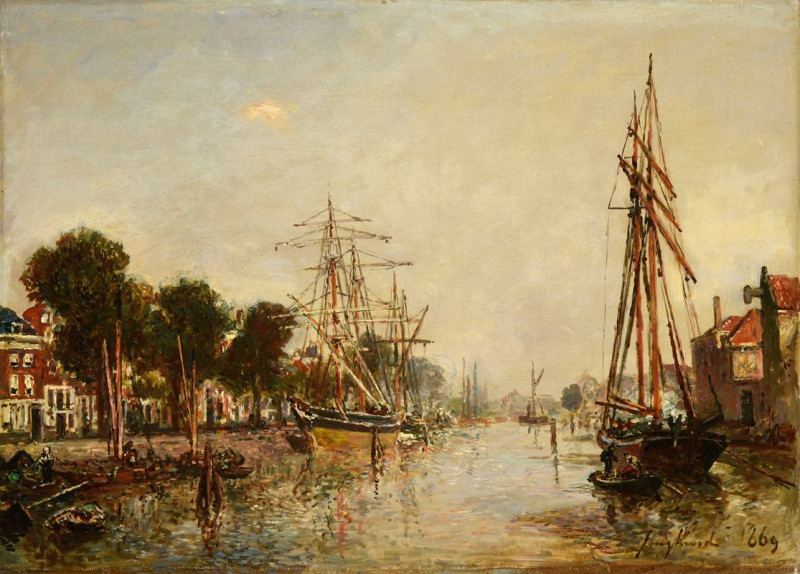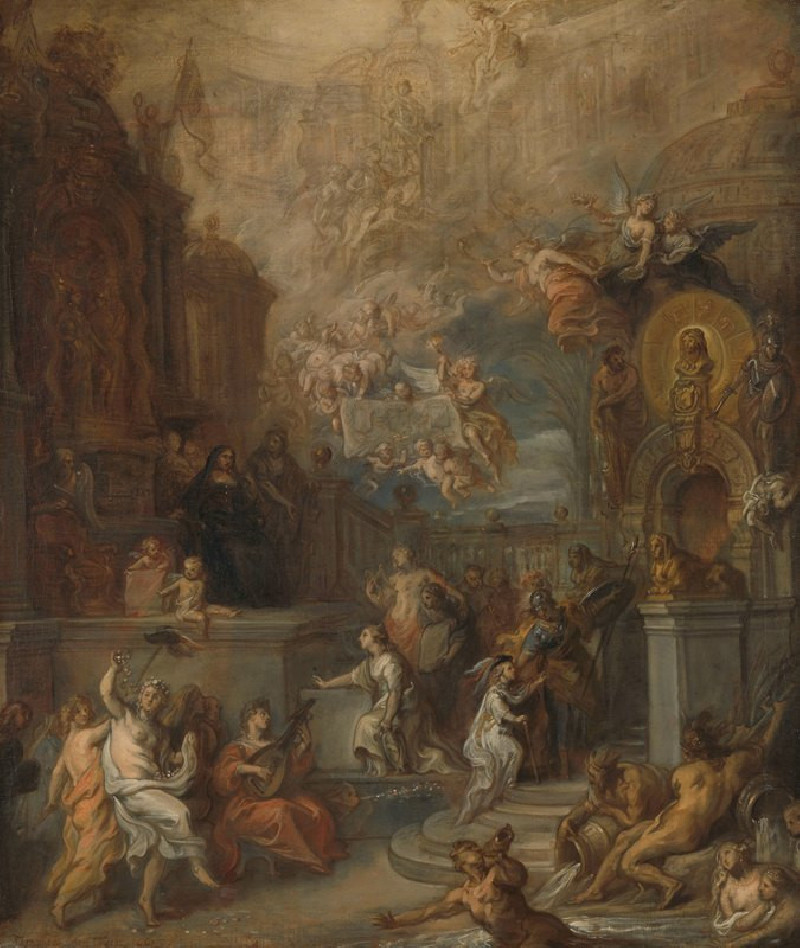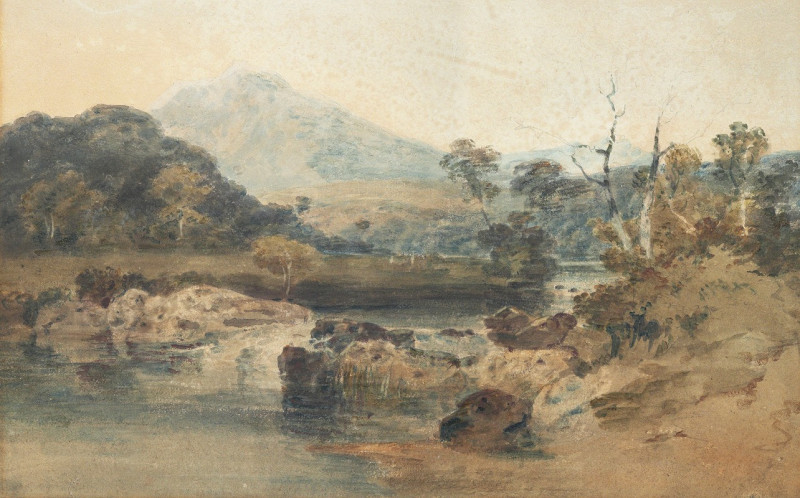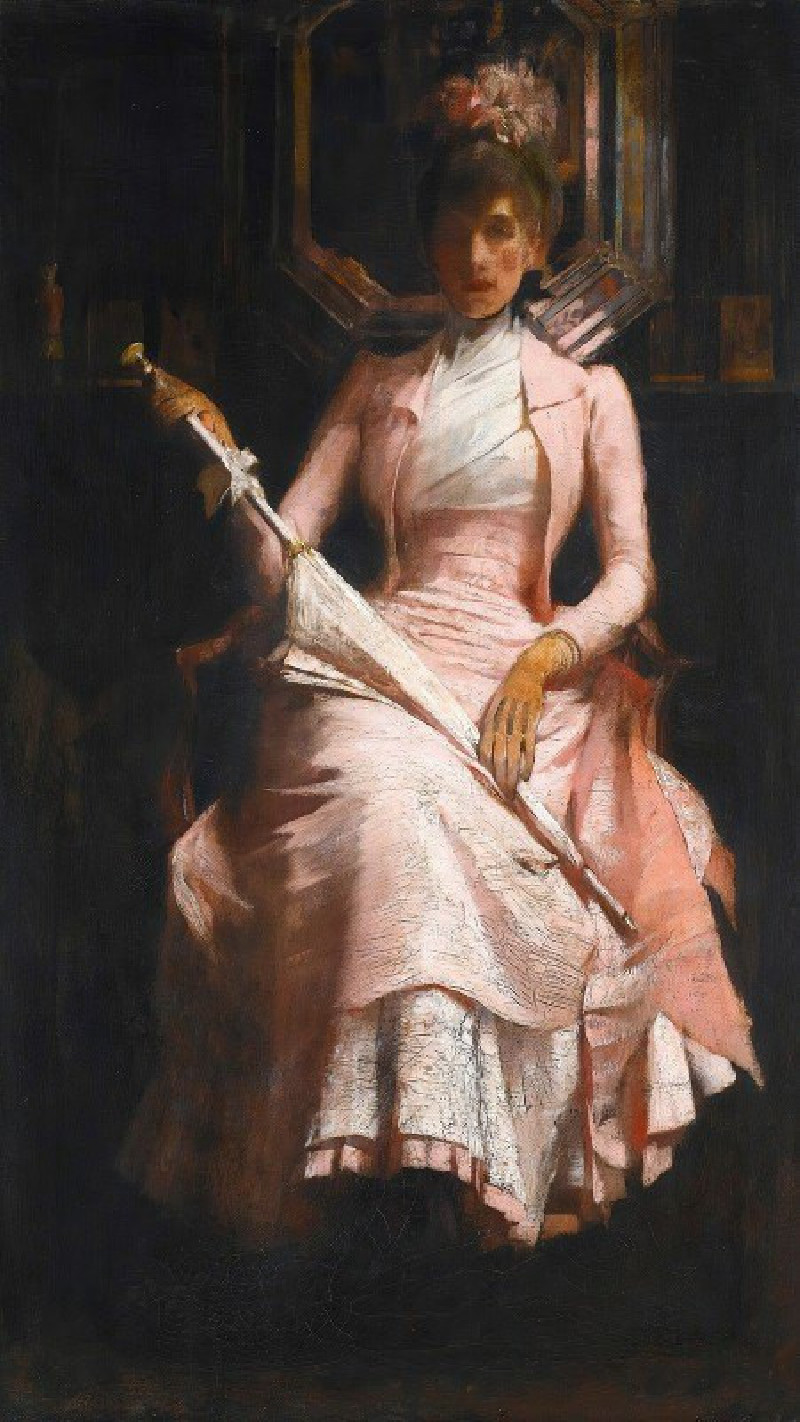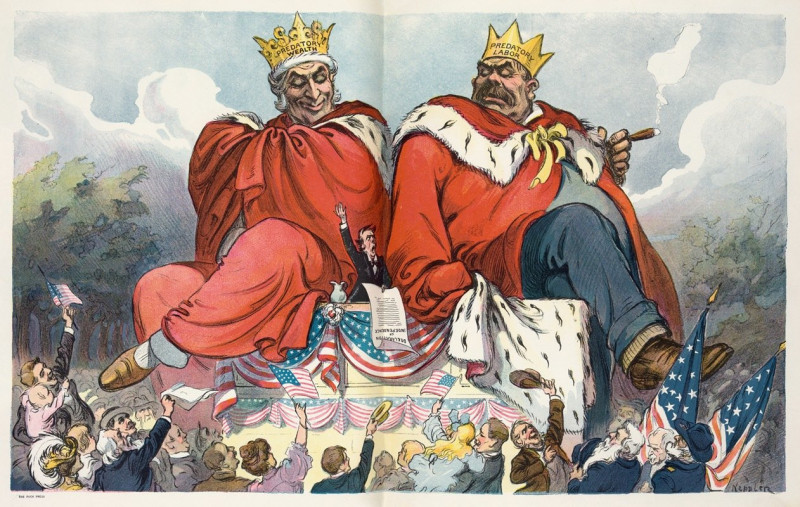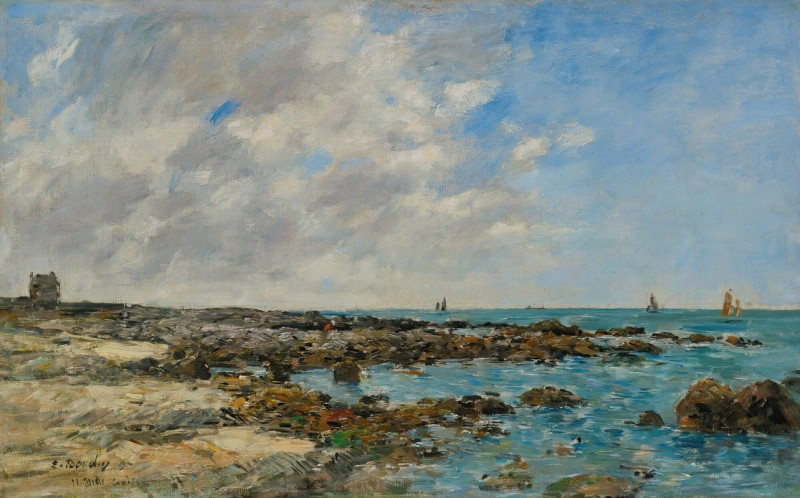A Turn in the Road (1873)
Technique: Giclée quality print
Recommended by our customers
More about this artwork
In the enchanting landscape painting "A Turn in the Road" by Alfred Sisley, we are introduced to a serene rural scene capturing the essence of a peaceful moment in the countryside. Painted in 1873, Sisley, a master of Impressionism, hones in on the harmony of natural light and the gentle interplay of colors to evoke a sense of tranquility and timelessness.This painting draws viewers into a quaint village scene where a winding road takes a gentle curve around a cluster of traditional houses. The road is bordered by lush greenery and a prominent, beautifully detailed tree that anchors the composition on the right, adding depth and texture with its dense foliage. The sky, a vast expanse of swirling blue and white, casts a dynamic backdrop that seems to envelop the entire scene in a soft, diffuse light.Adding life to this pastoral setting are small figures in the distance—perhaps local villagers or travelers—ambling along the road or pausing by the wayside. These figures, although minimally detailed, play a crucial role in conveying the everyday simplicity and the slow pace of life outside the hustle and bustle of urban centers.Through his distinctive brushstrokes and the effective use of light and shadow, Sisley not only paints a picture but also tells a story of a moment captured in time. "A Turn in the Road" invites viewers to step into a world where nature and humanity exist in quiet harmony, offering a window into the tranquil scenes that inspired so many of Sisley’s works.
Delivery
Returns
Alfred Sisley (1839–1899), an English impressionist artist, was renowned for his breathtaking impressionist landscape paintings. Born in 1839 to a wealthy family in Paris, Sisley spent most of his life in France. Despite being intended for a career in commerce, he rebelled and pursued his passion for painting as an amateur in the studio of Charles Gleyre, where he befriended artists Claude Monet and Pierre-Auguste Renoir. The financial loss of his family in the Franco-German War led Sisley to make a career out of his art, though it left him financially distressed. It wasn't until after his passing in 1899 that the true value of his work was recognized.



